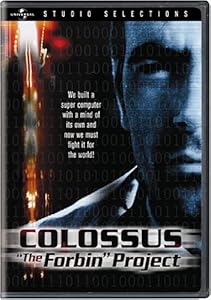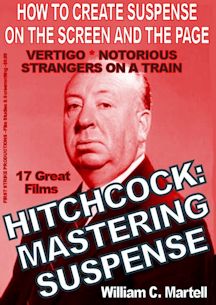The spider web fills the screen, it's Boris Karloff's THRILLER!
Season: 1, Episode: 10.
Airdate: 11/22/1960
Director: John Brahm
Writer: Donald S. Sanford
Cast: Boris Karloff, Audrey Dalton, Alan Caillou, Abraham Sofaer, Murvyn Vye, Alex Davion.
Music: Pete Rugolo
Cinematography: John L. Russell (PSYCHO)
Boris Karloff’s Introduction: “The unfortunate gentleman you’ve just observed has had a most terrifying experience. You see, his business is *pretending* to be clairvoyant... but the glimpse he just had into the future was true, as sure as my name is Boris Karloff. Imagine if you will, the plight of a man who finds his premonitions concerning those he loves coming true in the most horrible and violent ways. The name of our play is “The Prediction”, and appearing with me are Miss Audrey Dalton, Mr. Alex Davion, Mr. Abraham Sofaer, Mr. Alan Caillou, and Mr. Murvyn Vye. Let me assure you my friends, this is a thriller.”
Synopsis: In London, night club psychic Mace (Boris Karloff) is a fake... a great showman who entertains the audience with predictions of happy marriages and surprise good luck and other lightweight predictions... but tonight is different. Something weird happens to Mace and his beautiful assistant Norine (Audrey Dalton) realizes he’s going off script... when a skeptic asks who will win the big boxing match tonight, Mace screams that they must stop the fight because one of the boxers... Tommy... will die in the ring! When Mace tries to run off the stage, he trips and goes down, and the club owner Gus (Abraham Sofaer) has them drop the curtains. Backstage, Mace asks Norine’s loser father Burton (Alan Caillou) to race to the Boxing Match and stop the fight before Tommy gets killed. Burton races off...
Mace rests in his dressing room, worried that his crazy performance will get him and Norine fired. Because his beautiful assistant’s father is a drunk and a loser, Mace has become a father to her and takes care of both of them. He’s very protective of Norine... so when Gus knocks on the door and says he needs to see Mace immediately in the club. It’s a surprise party for Mace! Gus loves Mace, he’s the club’s best act. But the party is broken up by Gunner Gogan (Murvyn Vye) the manager of Tommy the boxer... who accuses Mace of making money from his fighter’s death. What? Seems that Burton *didn’t* warn anyone that Tommy would die, instead he bet against him and made $100! Gus and the others have to pull Gogan off Mace, and they tell him that Burton was sent to warn them, didn’t he? Gogan goes to find Burton...
Nadine has a secret fiancé, Grant (Alex Davion), her father Burton does not approve of their relationship. Grant wants her to marry him, now... run away and find a priest. But her father is a huge problem that has to be solved before she can get married...
Mace finds Burton in a pub, drinking and fooling around with a woman half his age (who may be a hooker, at the very least a woman of easy virtue)... spending that $100 as if there is more where that came from. And isn’t there? If Mace can keep making predictions, Burton can keep betting and winning! Mace and Burton have an argument, and Burton splits with the hooker (or whatever). Mace has another vision: Burton will be murdered!
The hooker (or whatever) leads Burton into a dark alley where a huge dude hits him in the head with a brick and steals his money and goes off with the hooker (or whatever). She was part of it all along, luring him to be mugged.
Mace feels *guilty* over Tommy and Burton’s deaths. “Did I forsee Burton’s death? Or will it to happen?” He’s a mess. When he hears that Gogan has been arrested for Burton’s murder, Mace has Gus call the police anonymously and give them the names of the hooker (or whatever) and her accomplice. He just *knew* the names! Then he has another vision... and warns Gus not to cross the stage to meet a man named Harcourt. Gus says he doesn’t know anybody named Harcourt.
Outside the night club: Grant asks Nadine to marry him now that she doesn’t have to take care of her father (I know that sounds terrible, but the dialogue makes it work). Grant has been transferred to another city and wants her to quit as Mace’s beautiful assistant and come with him. Nadine says she can’t just quit... and goes into the club. Grant follows her in to watch the show and try to change her mind afterwards.
Gus goes out on stage... when he gets a message: some guy named Harcourt is waiting in his office. Harcourt? He starts to cross the stage to his office... when a hanging sandbag falls from the rafters right at his head! But Mace runs across the stage and knocks Gus out of the way, the sandbag misses both of them.
Harcourt is a police detective who wants to know who made the anonymous call about Burton’s murder... because they were right. Was this a witness to the murder who didn’t come forward? Gus protects Mace by telling Harcourt that there are many phones in the club, and it could have been anyone. But Harcourt is suspicious.
Mace and Nadine do their act... when Mace has another vision and starts yelling for a man named Grant to come forward, he knows a man with that name is in the audience. Grant this is Mace’s way to break up the relationship and keep his beautiful assistant... and ducks out the back doors. Mace yells that the man named Grant must not make his trip... because he will die!
Later in a pub: Grant tells Nadine he is leaving the next night and wants her to go with him no matter what Mace says. She says no.
Grant goes to Mace, says he loves Nadine and wants to marry her... and Mace says: Great! Congratulations to both of you! I want whatever makes Nadine happy. Grant asks about the prediction, was it just a ruse? Mace says it was real, and Grant *will* die if he travels tomorrow night. Grant doesn’t believe him, and *needs* to leave tomorrow night to get to his job on time. So Mace tells him if he sees a sign that says “Edinburgh, 50 miles” he needs to turn around and come back. Grant agrees to this.
The next night, after the show, Mace and Nadine have a big emotional goodbye. And he warns her about the “Edinburgh, 50 miles” sign. Nadine leaves, gets in the car with Grant and drives off...
And Mace has another premonition: Grant and Nadine will be in an accident and a fire will burn them to death! Mace grabs Gus and they try to chase them down and stop it.
Now we get all kinds of clever stuff right out of Mace’s premonition as Grant and Nadine drive down the highway at night. This is where the story gets fun, because offhand things Mace said like “You’ll need a raincoat” even though it isn’t raining start to become true, and that makes us start to worry that both Nadine and Grant will die in a fiery car wreck. They do almost hit a stalled truck full of refuse in the middle of the road (at night) but Grant brakes at the last minute. The truck driver’s flare had burned out. Truck driver asks if they will tell the repair service at the big truck stop down the road to send help back, and they agree and drive off... just as the truck driver tosses a bent up old road sign deeper into his truck bed. What do you think that sign said?
Meanwhile, Mace and Gus as speeding to save them... take a short cut... and get to the big truck stop before they do, asking an attendant if they’ve passed by yet. Nope. So they head down the road towards Grant and Nadine. After only a few minutes Mace asks Gus to stop the car, and Mace gets out in the rain and stands in middle of the street with his hands up... just as Grant and Nadine’s car rounds the corner towards him! Grant tries to stop the car, but the asphalt is slick and they skid into Mace... killing him! And a minute later, the big truck stop behind them EXPLODES in a giant fireball! So Mace gave his life to prevent Grant and Nadine from going to that truck stop. The end is both a twist and emotional.
Review: The great thing about having Boris Karloff as your host is that he’s also a fine actor, and in this episode he is completely believable as the paternal fake psychic (the kind of role he might have played in a film) and gets two pretty good emotional scenes where he gets a chance to act. Though not one of the great episodes, it’s a lot of fun and there are some nice twists along the way.
The fake psychic who becomes real is a great plot, better used in one of my favorite Cornell Woolrich novels THE NIGHT HAS A THOUSAND EYES (made into an okay movie with Edward G Robinson). That book has a great prediction: that a man will die at the claws of a lion... and takes place in *New York City* where that seems unlikely... until a lion escapes from the zoo! The great twist in that book is that the man dies at the feet of one of the lion statues in front of the library. In this THRILLER episode the fun is in watching all of the small elements of Mace’s prediction come true, which builds dread that the big one will come true. That’s a great writing technique, by the way: have a prediction and piece by piece have it come true, leading us to believe it will *all* come true... then find that twist where it comes true im an unexpected way!
For a TV episode, it feels much bigger than whatever its budget was: the two cars on country roads at the end has a great deal of production value, and the night club set seems very real. The pub gets used twice in the story, so it earns its keep.
Once again we are on the right track! This is the type of story I think of when I think of the THRILLER TV show. Something that is either straight suspense or creepy weird tale. Will next week’s episode stay on track? It stars Elisha Cook, jr and a pre DICK VAN DYKE SHOW Mary Tyler Moore and has some elements of SPEED!
Bill






































